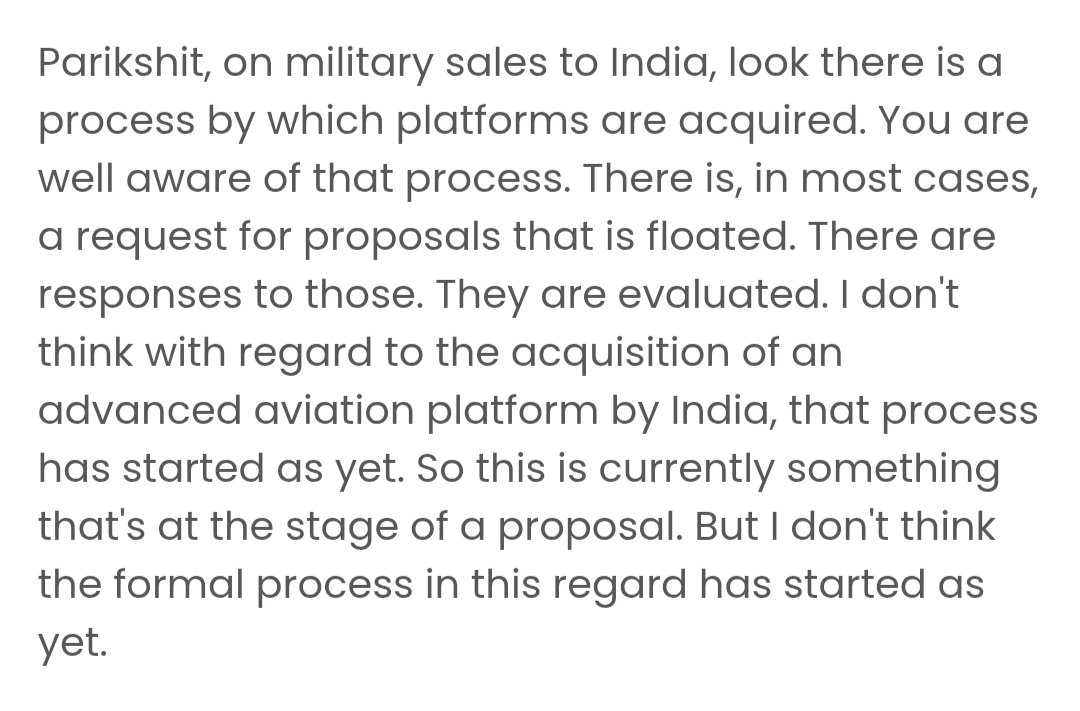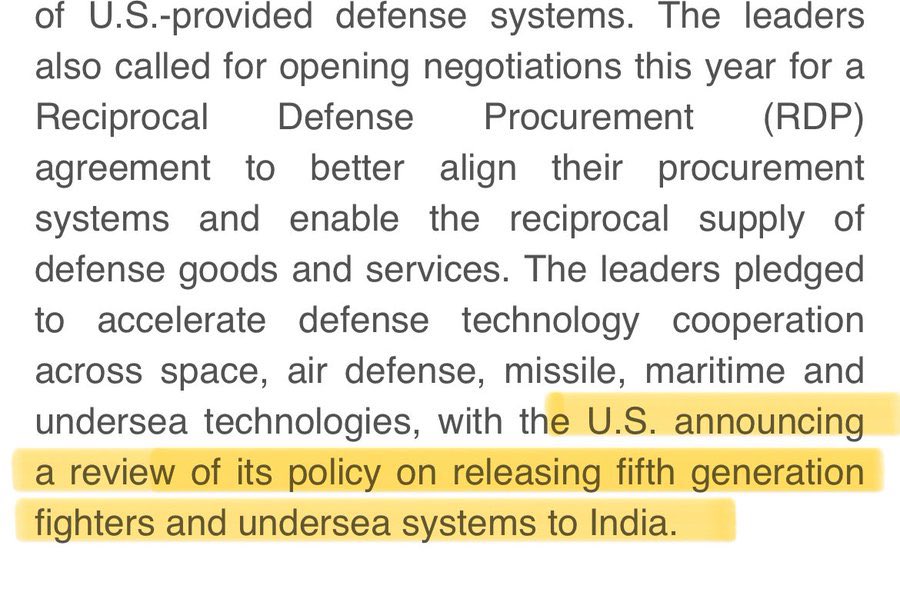The Race for Fighters: The IAF’s Dilemma
https://www.thehindu.com/news/national/ ... 049922.ece
02 Jan 2025
China has already fielded two fifth generation fighter jets becoming the only country other than the U.S. to have more than one fifth generation fighter. In comparison, the Indian Air Force is at 31 fighter squadrons, desperately awaiting new inductions and with no fifth generation fighter in the line-up for at least a decade.
In the last two weeks, taking the world by surprise, China unveiled a series of high technology platforms establishing its technological supremacy. These include two stealth fighter jets, the launch of an amphibious naval ship, a new “comprehensive” scientific research ship for global deep-sea exploration, a supersonic civil jet prototype and a new bullet train dubbed the world’s fastest. The timing could not have been starker, highlighting the widening technological gap with the Indian Air Force (IAF) which is struggling to maintain its fighter squadron strength as modernization is plagued by delayed deliveries.
Chinese Military Modernization
Last week, videos emerged on social media of two stealth fighter jets in tail-less configuration. One of them a massive jet with delta-wing design, featuring three engines hinting at a likely long range, flying over Chengdu in Sichuan province went viral on social media ‘X’. Videos of the second smaller jet featuring a smaller twin-engine design with swept wings emerged a day later. Reports suggest that the larger jet was designed by Chengdu Aircraft Corporation while the smaller jet is from the rival Shenyang Aircraft Corporation. However, there has been no official comments from China or from their state media so far on the developments. The People’s Liberation Army Air Force (PLAAF) of China has already fielded two fifth generation fighter jets, the medium J-35 and the heavy J-20, becoming the only country other than the U.S. to have more than one fifth gen fighter. With the two new jets, dubbed by many commentators as sixth gen-fighters which is debatable, China has, undoubtedly, taken giant strides in the race.
The recently released report to the U.S. Congress on the military and security developments involving the PRC for 2024 noted that the PLAAF and PLAN (Navy) Aviation together constitute the largest aviation force in the Indo-Pacific region. “The PLAAF is rapidly approaching technology typical of U.S. standards,” it noted. The PLAAF and PLAN Aviation continue to field greater numbers of fourth-generation aircraft (now more than 1,300 of 1,900 total fighters, not including trainers) and probably will become a majority fourth-generation force in the next several years, the report added. In addition, the J-35 and J-20 are being added at a phenomenal rate and flight testing of the latest jets indicate a fairly advanced state, and that they have been under development for sometime.
The IAF’s Modernization Plan
The IAF is at 31 fighter squadrons as against the sanctioned strength of 42 squadrons, desperately awaiting new inductions and with no fifth gen fighter in the line-up for at least a decade, the only outlier among major countries. Recent reports state that Pakistan has approved the procurement of 40 J-35s from China. In an uncanny coincidence, very recently the Defence Ministry has appointed a committee led by the Defence Secretary to look into the overall capability development of the IAF.
India has an ambitious plan lined up for the acquisition of over 500 fighter jets, a bulk of them to be indigenously designed and manufactured, majority of them for the IAF. However, these are at various stages of development and manufacturing and their timely deliveries are critical. Of these, the LCA variants will constitute the bulk. There are 83 LCA-Mk1As on order but their deliveries have been delayed as the F-404 engines by General Electric (GE) have been delayed. A deal for 97 additional Mk1As is under discussion. The LCA-Mk2, fifth generation fighter the Advanced Medium Combat Aircraft (AMCA) and the Twin Engine Deck Based Fighter (TED-BF) for the Navy all have very ambitious development timelines but given the complexity and track record, it has to be seen how soon they are ready and available for induction.
The Defence Research and Development Organization (DRDO) is working on the indigenous development of LCA-Mk2 aircraft and the AMCA, the Defence Ministry informed the Parliamentary standing committee on defence as per a report tabled earlier this month. “The deliveries for LCA-Mk2 and AMCA are expected to commence only into the next decade once the development cycle is successfully completed.”
It must be noted that of the current 31 squadrons, the phase out of two MIG-21 squadrons has been extended due to the delayed deliveries of LCA-Mk1A. The Jaguars, Mirage-2000s and MIG-29s will begin going out by the end of the decade. For instance, by 2027-28, the first of the MIG-29s, inducted in the late 1980s, will start going out and by early 2040s, when most of these types will be phased out, some of the early lot of SU-30s will also start going out. The IAF has in all contracted 272 Su-30s, and a deal to procure 12 additional Su-30MKIs to replace the ones lost in accidents has just been signed while a major Sukhoi upgrade program is in the final stages of approval.
Another critical procurement program that hasn’t progressed for several years is the 114 Multi-Role Fighter Aircraft (MRFA), a foreign jet intended to be manufactured in India with significant technology transfer. The Request For Information (RFI) for 114 MRFA was issued in April 2019 to global aircraft manufacturers but has since made no progress with even the preliminary Acceptance of Necessity (AoN) from the Government yet to be received. Given the long timelines for the procurement process, and factoring in the time to set up facilities in India and for the jets to roll out, the MRFA is unlikely to be available in significant numbers till the middle of the next decade.
As reported by The Hindu recently, in the backdrop of the controversy in the procurement of 36 Rafale fighter jets, the government is looking at a procurement model that is transparent and non-controversial for the MRFA. Underscoring this urgency, IAF Air Chief Marshal A. P. Singh said in October that the MRFA was “needed as of yesterday”. The larger and more capable LCA-MK2 is under development and is supposed to do its first flight this October, with December 2027 to be the end of research and development for LCA-Mk2. “If these timelines are met and the MRFA is signed parallelly we are OK. We are not badly off. But if these timelines are pushed, then we need to look at alternatives,” the Air Chief had stated.
In October 2022, then IAF Chief ACM V.R. Chaudhari conceded that even with the LCA-Mk1A, LCA-Mk2 and the MRFA, “We will still be at 35-36 (squadrons) by middle of next decade.” It is pertinent to note that, barring the AMCA which will take sometime the LCA variants and the MRFA are all four gen plus fighters. On the delay in the LCA-MK1A, a representative of the Ministry informed the House Panel that it “Worries all of us. LCA Mark 1 is dependent on GE-404 engines. The supply of GE-404 engines has been adjusted by GE for the last two years. Due to COVID, their supply chain has broken down. They have not been able to resume yet. They have promised that they will start giving GE engines from March this year, next year onwards, the supply would get stabilized,” the representative submitted. As soon as the engine problem is sorted out, we have planned to make 24 LCAs every year and then 30 every year, the representative stated. On the agreement between Hindustan Aeronautics Limited (HAL) and GE for the license manufacture of the F-414 engines in India the Ministry representative expressed confidence that it should get it signed in the “next three to four months.”
Aero Engine Troubles
An aero-engine is likely to remain the single major dependency and the country’s Achilles heel for a very long time. Imported engines, directly or ‘co-manufactured’ will power all indigenous jets and helicopters till the end of this century at the current rate. The license manufacturing for the F-414 engine or the new 110KN engine likely to be co-developed and co-produced with France for the AMCA-Mk2 will still mean that India would be dependent on them for the most critical parts. It will essentially be between France and the U.S. — U.S. for a part of the fighter fleet and France for the reminder of the fighter fleet and for almost all of the helicopter segment as more indigenous platforms come in. The country can’t claim to be fully self-reliant till it can field an aero-engine that is completely designed and developed in-house.




